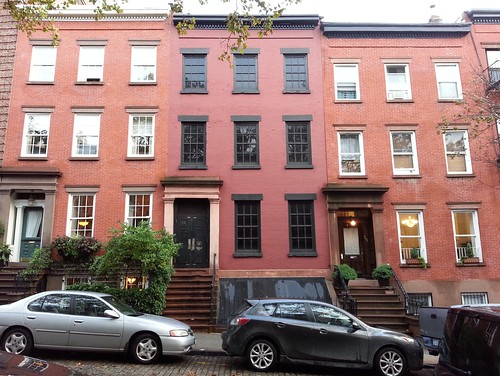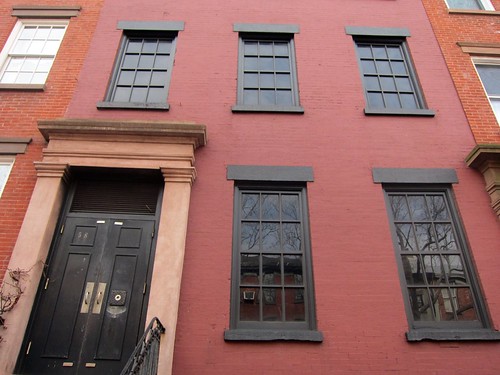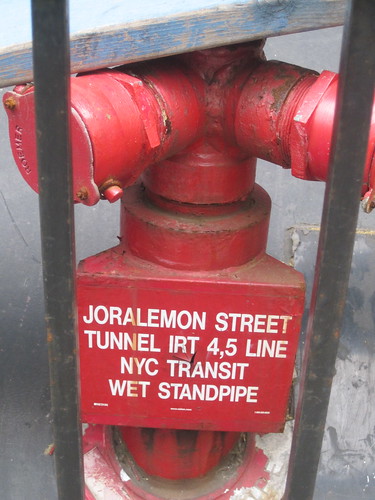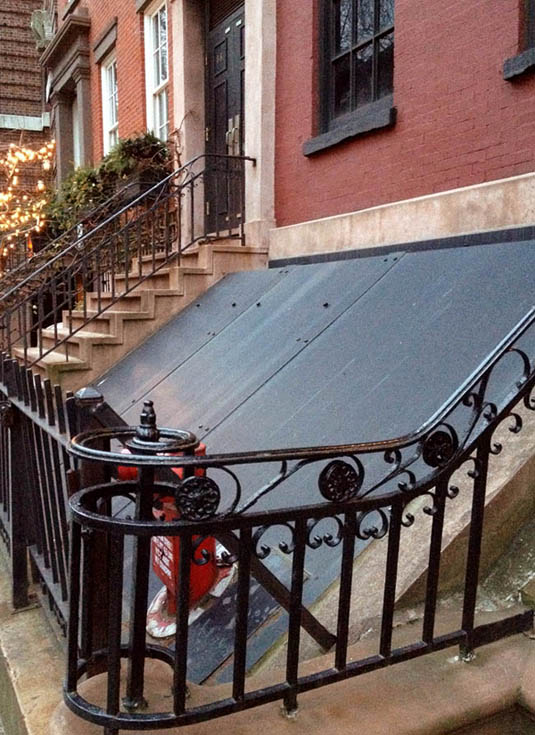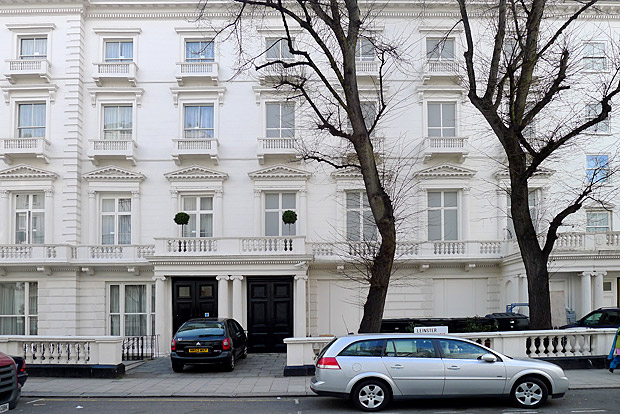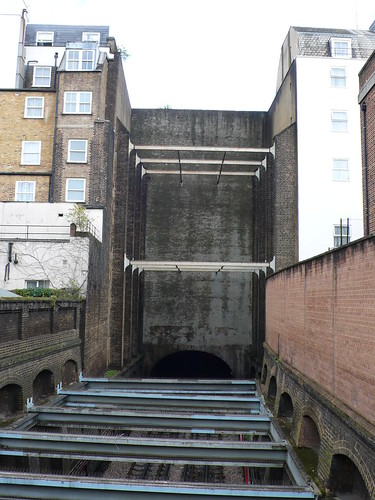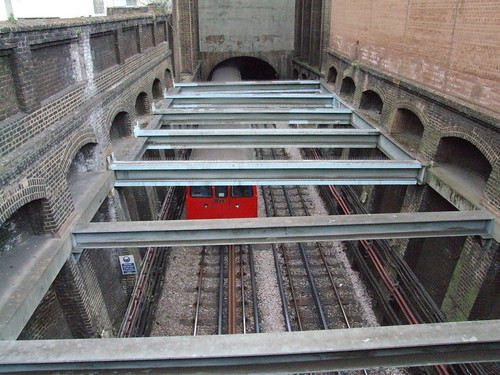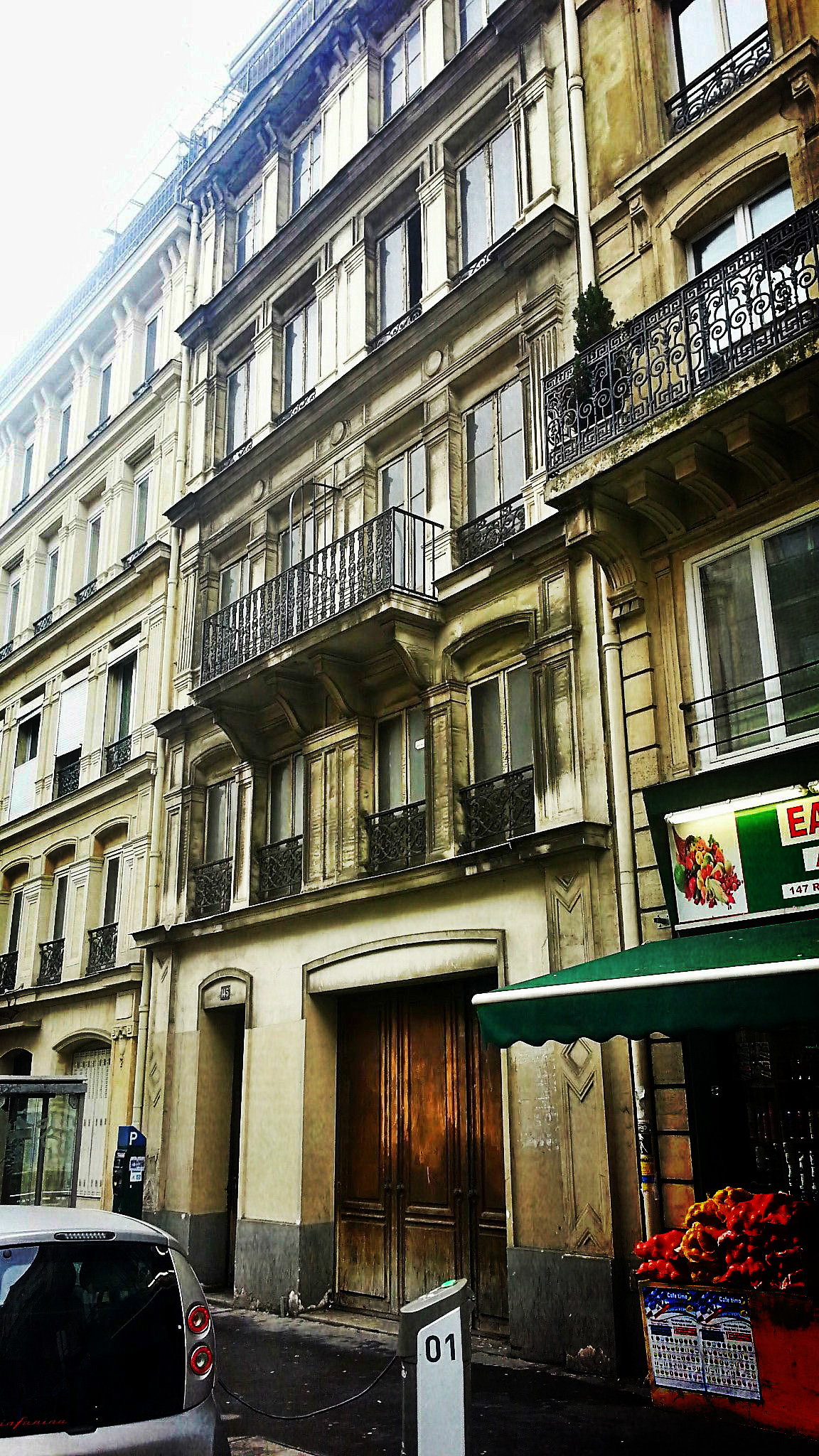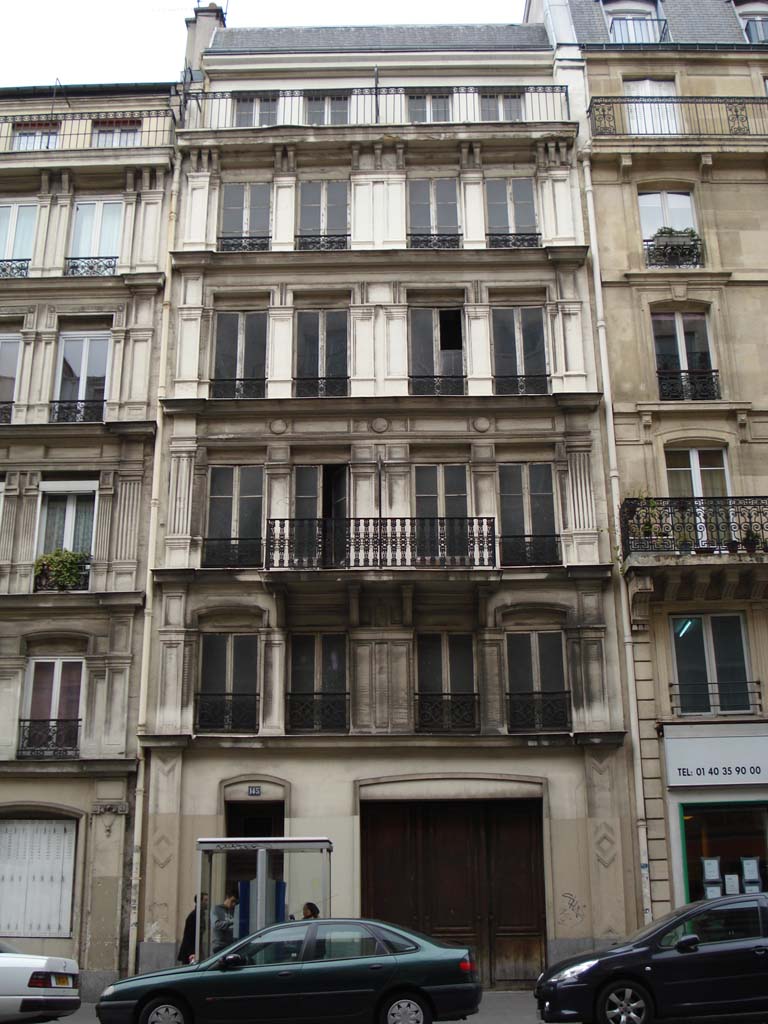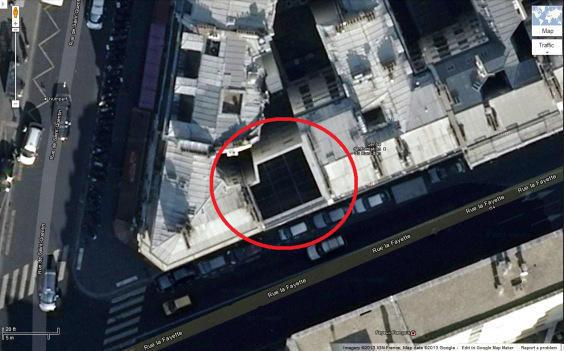Fake Townhouses hiding Mystery Underground Portals
Every city has its secrets, it’s just a matter of finding them…
On a street in Brooklyn that takes you towards the river, where the cobblestones begin paving the road, there is a townhouse that deserves a second look. Despite its impeccable brickwork, number 58 Joralemon Street is not like the other houses. Behind its blacked out windows, no one is at home; no one has been at home for more than 100 years. In fact, number 58 is not a home at all, but a secret subway exit and ventilation point disguised as a Greek Revival brownstone.
(c) Allison MeierThe house stands directly nine stories above the New York City subway tracks for lines 4 and 5, which carries passengers from the nearby station Borough Hall in Brooklyn under the East River over to Manhattan Island. If you approach the front door and peak through the crack, you’ll eyeball a bleakly lit windowless room with concrete flooring and a metal bunker-style door that could easily lead to a bat cave. Every so often, neighbours have reported¹ seeing men dressed in special work suits in the middle of the night hanging around the stoop at number 58.
The property was once a private residence dating back to 1847, according to the Willowtown Association, but in 1908, as the first underwater subway tunnel connecting Manhattan and Brooklyn was being constructed, the Metropolitan Transportation Authority of New York acquired the house. The windows were fitted with unsightly industrial steel shutters as the site was converted into a subway ventilator as part of a vast network for the tunnels below. For decades, vented air simply poured out from the windows according to neighbours¹, who knew it only as the “Shaft House”.
(c) Heather QuinianBut in the 1990s, the MTA decided to be a little more neighbourly. When new residents moved in next door, the authority cleaned up the unused backyard at number 58 and offered it to their new neighbours as an extension to double the size of their garden at the reasonable price of $200 a month. Attractive winding vines also now cover the smoothed-over bricked-up windows at the back of the house. In 1999, urged by the local neighborhood and the Landmarks Preservation Commission, the MTA fully restored the historic facade. The industrial steel shutter vents, from where smoke once billowed into the streets, were permanently shut and replaced with sleek opaque window panes. The vents found their new home high up on the building’s roof. Today, the value of number 58 Joralemon St is $2.8 million according to a 2010 estimate².
(c) Heather QuinianBut let’s get back to the bat cave. One neighbour who was lucky enough to be shown inside the Shaft House by MTA officials said it was reminiscent of “something out of A Clockwork Orange… it was open and cavernous, with catwalks going back and forth, this way and that, and somewhere down below the trains going by.”
(c) Heather QuinianIt’s not exactly clear when number 58 Joralemon Street became an emergency exit in addition to its usage as a fan plant, but the likelihood is that it happened post 9/11 when the threat of a fire in the subway tunnel became more prominent. In the event of an emergency, passengers would have to climb up the grim metal staircase that plunges nine stories down to the tunnels below. When they reached the top, there would be the windowless room with a door, and if they opened that door, it would lead them to a typical New York City townhouse stoop, as if they’d exited through a mystic portal from the underworld.
Next, we head to London in Bayswater where an up-market residential street just a few minutes walk from the vast greens of Hyde Park cleverly masks another portal to the city’s underworld and the world’s first underground railway.
In the 1860s, a tube line passing through Paddington and Bayswater was constructed and incidentally ran its path directly under 23 and 24 Leinster Terrace. The two five story houses had to be demolished in order to dig through the tunnels but once the finished tunnel was covered, it was decided that the houses wouldn’t be rebuilt … entirely that is.
(c) Southern DriverToday, you’ll see these rather smart looking townhouses in place next to each other, but if you wander round the back of 23 and 24 Leinster Terrace and look over the wall, you’ll find the buildings are nothing more than 5-ft thick facades that disguise a massive gaping hole into the underground.
(c) Looper 23The old London underground trains used to be powered by steam and so the gaping hole of open tracks became a rather convenient way to vent air from the subway.
There’s a great little story about an alleged famous hoax³ in the 1930s involving the two houses. A fraudster managed to make a ‘small fortune’ by selling tickets for a grand charity ball at 10 guineas a ticket. When guests arrived dressed to the nines at the ball’s stated location, 23/24 Leinster Terrace, they were in for a cheeky surprise when they knocked on the fake door only to realise they had been well and truly conned!
(c) Falling_angel….But where is the original fake house in Paris disguising a giant ventilation chimney for the Métro?
According to the BDLG blog, in the novel by Italian philosopher, Umberto Eco, entitled Foucault’s Pendulum, there is an obscure dialogue between two characters about a house in Paris that seems to be hiding something. “[People] walk by and they don’t know the truth,” writes Eco, “that the house is a fake. It’s a facade, an enclosure with no room, no interior. It is really a chimney, a ventilation flue that serves to release the vapors of the regional Métro. And once you know this you feel you are standing at the mouth of the underworld…”
The novel might be fictional but this sounds like good mystery that needs solving (any tip-offs are most welcome)!
FOUND !! (Updated)
One of my brilliant readers sent in this tip from a blog called Paris by Cellphonethat has found the fake house in Paris. It’s located at 145 rue la Fayette in the 10th arrondissement.
“The building 145, rue la Fayette is only a front. Literally. The balcony is there, the door is there, but no building waits behind it. The false facade is there only to hide a giant ventilation chimney for the metro,” the blogger behind Paris by Cellphone writes.
And he even has the Google image to prove it….
Before you go, let’s see one more Paris has to offer! This one pictured below, located on Rue du Temple and Rue Chapon in the Marais, is not actually a secret passageway to the Paris metro, but an artist’s trompe l’oeil. Below is a picture of the location before the clever trickery was installed in 2006…
Then:
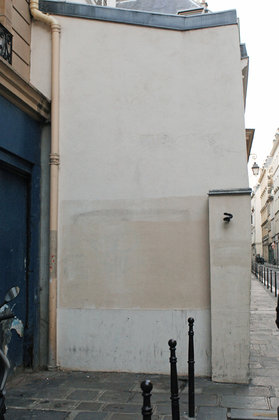
Now:

The facade was installed by artist Julien Berthier one Saturday morning at 7 o’clock in the morning on a ‘blind wall’ in the 3rd arrondissement. The façade, abiding by the local architectural codes, occupies 10 cm of public space, and was simply mounted and glued by Julien and his team. Many years later, the fake address is still there and the city services regularly cleaned off the graffiti.
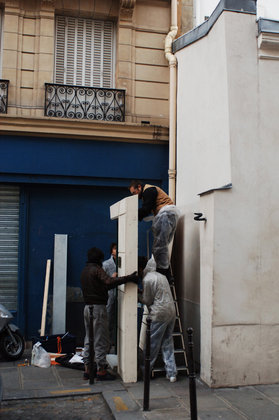
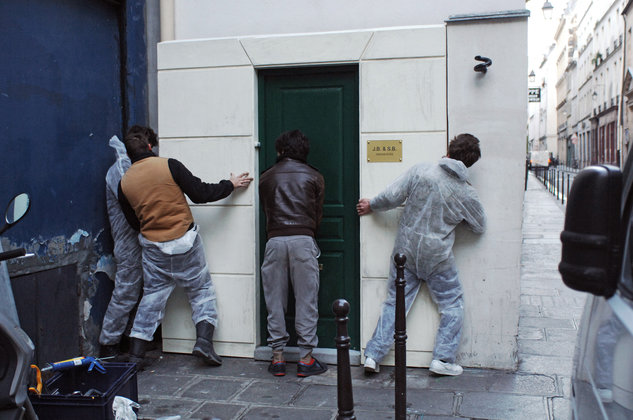

Images via Julien Berthier, see more of his work via his website.
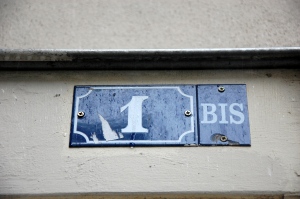 (c) Paris untapped
What’s hiding in your city?
(c) Paris untapped
What’s hiding in your city?
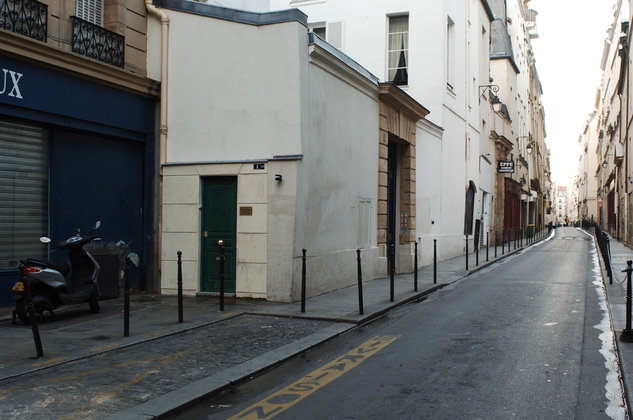 Sources: Brooklyn Heights Blog & 1, 2, 3, 4, 5
Sources: Brooklyn Heights Blog & 1, 2, 3, 4, 5
